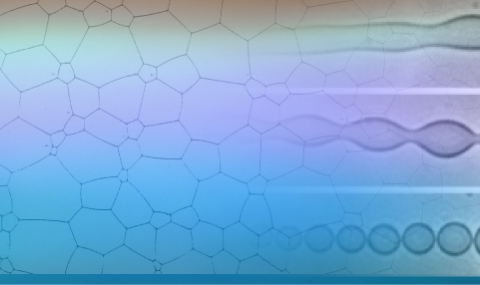Cellular structures
Rapidly quenching a thin liquid layer into its solid phase, produces an array of polygonal crystallites, which tile the plane. The 2-D pattern coarsens in time according to the following rule: polygons with 5 or less sides shrink, while those with 7 or more expand. Disappearance of a polygon may change the number of sides of its neighbors. Surprisingly the system reaches a regime where the relative proportion of triangles, squares, etc. becomes time-independent.
Soap bubbles between two glass panes constitute a good model for these systems. In the case of soap bubbles, diffusion of gas across films is the driving force behind the evolution. Compare the evolution of a soap froth with that of a polycrystalline layer.
Soap bubbles
|
Soap froth: pressure differences drive the evolution: polygons with 5 or less sides shrink, while those with 7 or more expand. |
|
|
Thin polycrystalline layer: atom migration along boundaries is responsible for the coarsening. |
 |



